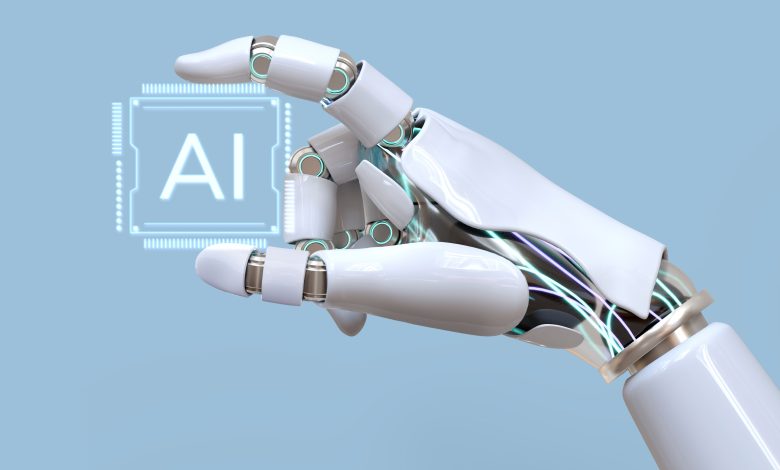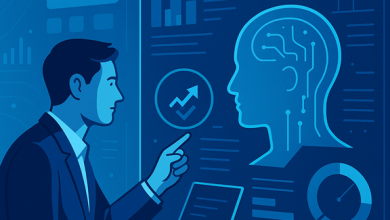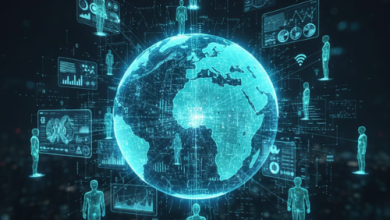
The advertising industry is experiencing its most profound transformation since the invention of the internet. AI has moved beyond optimizing existing processes to fundamentally rewriting the rules of how brands connect with consumers. For marketing professionals watching this unfold, the implications extend far beyond marketing departments and into the fabric of commerce itself.
Three seismic shifts are occurring simultaneously: creative production at unprecedented scale, the automation of media buying, and the convergence of technologies that accelerate consumer behavior.
1. Creative Variations Become the New Targeting
Meta’s latest moves reveal a stunning alteration in audience targeting strategy. Meta has fundamentally shifted from manual audience modeling-focused targeting to using creative variations as the primary targeting mechanism.
This shift in targeting is profound. AI automatically assembles creative elements, such as images, text, and calls-to-action, to generate thousands of ad variations. Each variation becomes a signal, helping the algorithm understand which messages resonate with specific users. Creative quality now influences 70-80% of campaign performance, compared to traditional targeting parameters that once dominated strategy discussions.
Results validate this approach.
- AI‑optimized creatives deliver up to 2X higher click-through rate vs. manual variants via real‑time optimization and audience‑driven personalization
- Rapid iteration yields ROAS improvements up to 50% within weeks and lowers CPAs by pruning underperformers
- AI templates can generate 500+ SKU‑level ads in a fraction of the time of manual ad creation. Small teams can now produce volumes of creative that previously required entire agencies.
But here’s where marketing professionals need to think deeper: What happens when every advertiser can generate unlimited creative variations?
The democratization of creative production eliminates the competitive advantage of large agencies with big creative teams. A solo entrepreneur can now compete with Fortune 500 companies in creative volume and sophistication. This sounds utopian until you consider the downstream effects.
We’re amplifying our existing attention economy crisis exponentially. When millions of advertisers generate thousands of variations, the digital world becomes flooded with AI-generated content. Consumers, already fatigued by advertising, face an exponential increase in messages competing for their attention. The likely result? A countermovement toward authenticity and “human-made” creative as differentiators. Brands that can prove human involvement in their creative process may command premium attention and brand affinity.
2. Media Buying Evolves from Execution to Strategy
The numbers are staggering: according to eMarketer, an estimated 91.3% of US digital display ad spending in 2024 was programmatic. Global programmatic spend reached $595 billion and is projected to approach $725 billion in 2025. The real story here though is the fundamental shift in human involvement.
AI algorithms can handle the myriad complexities of media buying: real-time bidding, inventory selection, budget optimization, and performance prediction. What once required teams of buyers managing spreadsheets, negotiations and DSP interfaces, now happens in milliseconds across millions of variables. Eighty-three percent of senior marketers use AI in some form for ad targeting, but many would have trouble explaining in detail how the AI actually works.
So, what’s the role of programmatic media planners and buyers when machines handle execution better than humans ever could? The answer lies in strategic orchestration. Instead of managing the minutiae of campaigns day-to-day, professionals can now craft the parameters that guide AI systems. They’re becoming conductors rather than musicians, strategists rather than tacticians.
Now, consider the second-order implications for market dynamics and competitive advantage. For example, the concentration of buying power in AI systems. These algorithms learn to game each other while optimizing their objectives. We’re likely to see instances of AI systems creating artificial scarcity or demand patterns to drive up prices. When algorithms negotiate with other algorithms at superhuman speed, market manipulation takes new forms that regulators don’t yet understand. The machines have moved beyond buying media to reshaping market dynamics in ways that benefit their objectives, not necessarily market health.
3. The Perfect Storm of Consumer Behavior Manipulation
The convergence of hyper-personalization, dynamic pricing, and unlimited creative creates unprecedented influence over consumer behavior. According to McKinsey, while 40% of consumers report seeing irrelevant ads, those experiencing AI-powered personalization tell a different story. Retailers using AI-targeted campaigns see 10-25% increases in return on ad spend. Nearly half of consumers don’t mind targeted ads when they’re relevant.
Dynamic pricing amplifies this effect exponentially. AI adjusts prices in real-time based on demand, supply, consumer behavior, and market conditions. Amazon makes 2.5 million price adjustments daily, creating a fluid marketplace where the “right price” exists only for a specific person at a specific moment.
Combine this with personalized creative served at optimal times through preferred channels, and you have a system that can predict and influence purchase decisions with frightening accuracy. The AI knows what you want and when you’re most likely to buy, crafting the perfect offer for that exact moment.
We’re witnessing the emergence of AI-induced hyper-consumerism. The combination of perfect targeting, optimal pricing, and endless creative variations creates nearly irresistible purchase triggers. Consumers lose the cognitive space for deliberate decisions. Impulse purchases, justified by AI-optimized rationalizations, become the norm.
The societal implications are profound – and regulators are beginning to ask whether this constitutes a new form of consumer manipulation requiring intervention. If AI can predict and influence behavior with such precision, at what point does marketing become manipulation? The gambling industry faces strict regulations because it exploits human psychology. Should AI-powered advertising face similar scrutiny?
The Path Forward
These transformations represent a technological evolution reshaping the relationship between brands and consumers, between human creativity and machine optimization, between free choice and algorithmic influence.
For marketing professionals, the implications extend beyond advertising. The same technologies transforming marketing are applicable to any domain involving human decision-making. Healthcare, education, finance, and government services all face similar opportunities and challenges.
The question isn’t whether to embrace these technologies. The question is how to wield them responsibly while maintaining human agency and authentic choice. As builders and implementers of AI systems, we must consider not just what our technologies can do, but what they should do.
The advertising industry offers a preview of a broader transformation. When AI can generate, target, price, and optimize in real-time, human roles shift from execution to oversight, from tactics to ethics. The most successful professionals won’t be those who resist this change, but those who understand both its power and its perils.
The revolution is here. The only choice is how thoughtfully we navigate it.



